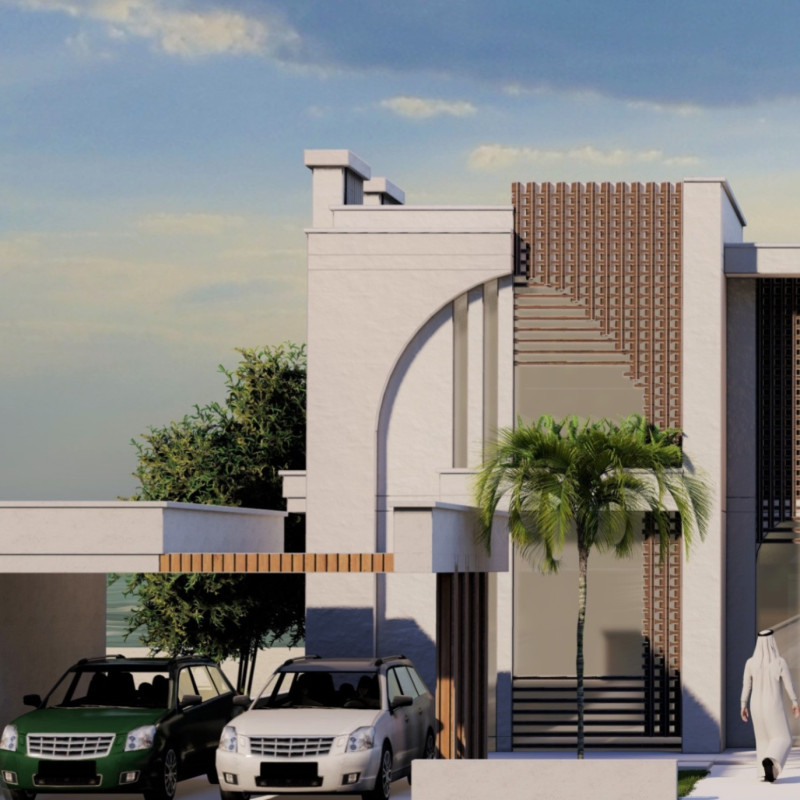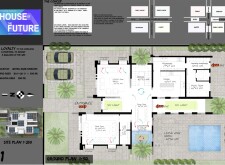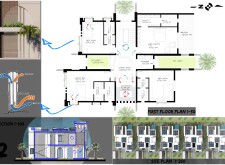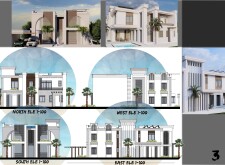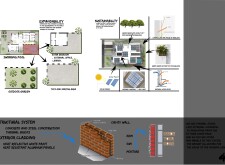5 key facts about this project
## Overview
The House of the Future is a sustainable family residence located in the United Arab Emirates, designed to integrate modern living with cultural representation and environmental responsibility. The intention behind the design is to embody principles of adaptability and family dynamics while reflecting the values and aspirations of contemporary society.
### Spatial Configuration and Functionality
The residence spans two levels, encompassing a total building area of 320 square meters on a 500 square meter plot. The ground floor features a series of interconnected family-oriented spaces, including a living room, dining area, and kitchen, each arranged to promote both interaction and privacy. Natural light and ventilation are prioritized through the incorporation of skylights and strategically placed windows, enhancing both comfort and energy efficiency. Additionally, outdoor spaces such as gardens and a swimming pool extend the living area, fostering communal activities and encouraging a connection with nature.
### Material Selection and Sustainability
The construction employs a mix of concrete and steel, augmented by thermal bricks to improve insulation. The exterior is clad with heat-reflective white paint and heat-resistant aluminum panels, balancing durability with aesthetic cohesion. The design includes a cavity wall system that offers moisture, sun, and heat resistance, promoting longevity and lowering maintenance needs. A commitment to sustainability is further demonstrated through the integration of solar panels and natural ventilation systems, which collectively enhance energy efficiency and reduce reliance on artificial cooling.
The landscape is purposefully designed to provide ecological benefits and recreational space, reinforcing the connection between indoor and outdoor environments. The emphasis on passive cooling strategies and the use of renewable energy sources contribute to a significantly reduced ecological footprint, promoting a responsible approach to urban living.


